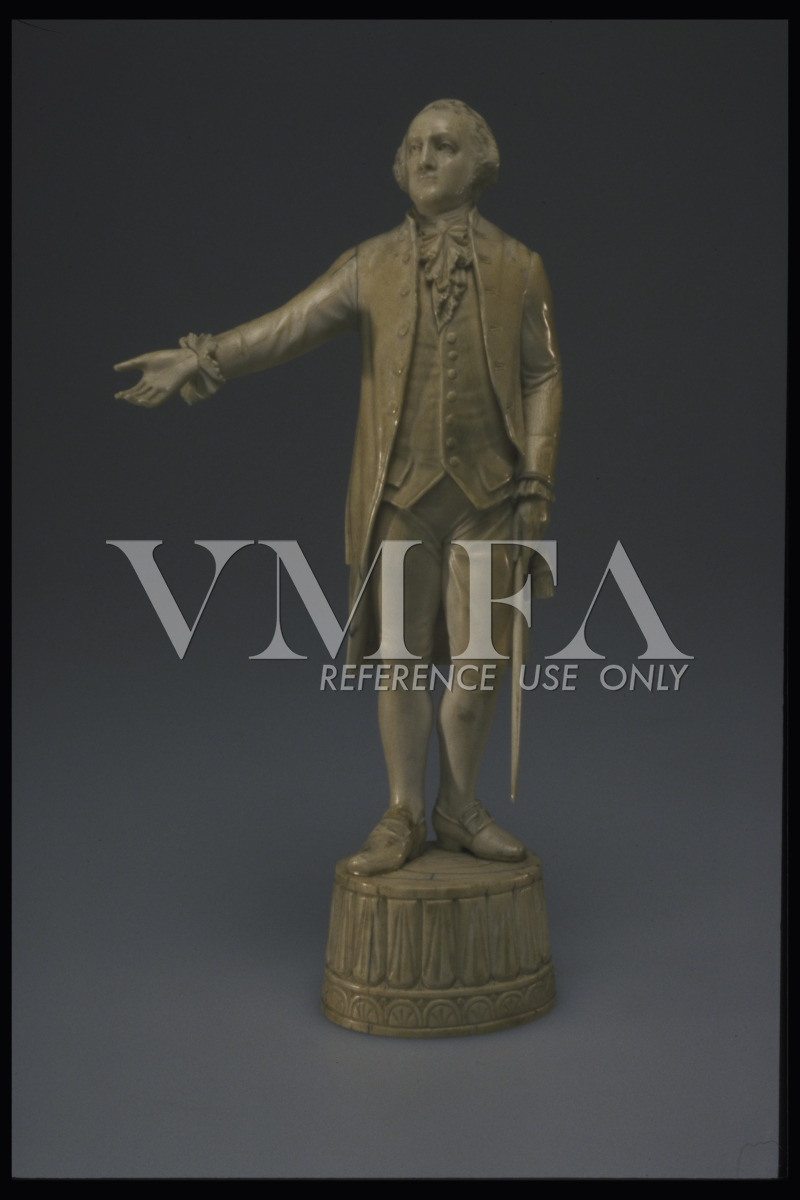
George Washington (Primary Title)
Unknown (Artist)
After the Revolutionary War, American merchants expanded their international trading routes to India. In 1784, the wealthy Philadelphia Thomas Willing dropped anchor on the southeast coast of India at the French port of Pondicherry. From this journey, his daughter Anne Willing Bingham received the ivory-clad secretary (on view nearby). This figural carving is also connected to her. By the 1790s, trade with India had exceeded that with China. This success depended on the support of influential businessmen such as Ramdoolal Dey, a Calcutta-born merchant who advocated strong commercial ties with the West. In 1801, as “a mark of esteem and affection,” a group of American traders and ship captains presented Dey with a copy of Gilbert Stuart’s Lansdowne portrait of George Washington (illustrated at right). Originally commissioned in 1796 by Senator William and Anne Willing Bingham, it was gifted to the English Marquis of Lansdowne in recognition of his support for American independence. It quickly became an icon and, following its arrival in India, likely inspired this unique statuette.
Arthur and Margaret Glasgow Fund
Image released via Creative Commons CC-BY-NC
Some object records are not complete and do not reflect VMFA's full and current knowledge. VMFA makes routine updates as records are reviewed and enhanced.

